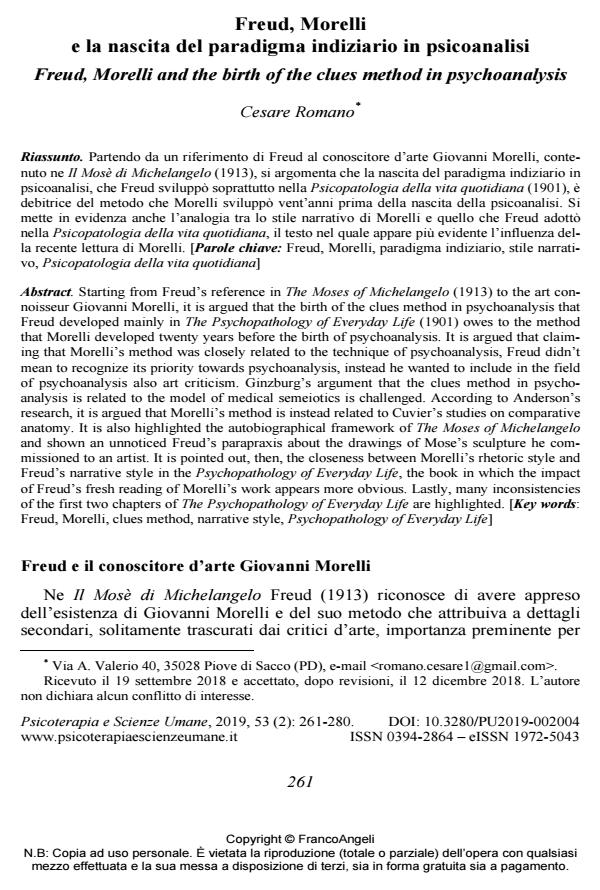Freud, Morelli and the birth of the clues method in psychoanalysis
Journal title PSICOTERAPIA E SCIENZE UMANE
Author/s Cesare Romano
Publishing Year 2019 Issue 2019/2
Language Italian Pages 20 P. 261-280 File size 168 KB
DOI 10.3280/PU2019-002004
DOI is like a bar code for intellectual property: to have more infomation
click here
Below, you can see the article first page
If you want to buy this article in PDF format, you can do it, following the instructions to buy download credits

FrancoAngeli is member of Publishers International Linking Association, Inc (PILA), a not-for-profit association which run the CrossRef service enabling links to and from online scholarly content.
Starting from Freud’s reference in The Moses of Michelangelo (1913) to the art connoisseur Giovanni Morelli, it is argued that the birth of the clues method in psychoanalysis that Freud developed mainly in The Psychopathology of Everyday Life (1901) owes to the method that Morelli developed twenty years before the birth of psychoanalysis. It is argued that claiming that Morelli’s method was closely related to the technique of psychoanalysis, Freud didn’t mean to recognize its priority towards psychoanalysis, instead he wanted to include in the field of psychoanalysis also art criticism. Ginzburg’s argument that the clues method in psychoanalysis is related to the model of medical semeiotics is challenged. According to Anderson’s research, it is argued that Morelli’s method is instead related to Cuvier’s studies on comparative anatomy. It is also highlighted the autobiographical framework of The Moses of Michelangelo and shown an unnoticed Freud’s parapraxis about the drawings of Mose’s sculpture he commissioned to an artist. It is pointed out, then, the closeness between Morelli’s rhetoric style and Freud’s narrative style in the Psychopathology of Everyday Life, the book in which the impact of Freud’s fresh reading of Morelli’s work appears more obvious. Lastly, many inconsistencies of the first two chapters of The Psychopathology of Everyday Life are highlighted.
Keywords: Freud, Morelli, clues method, narrative style, Psychopathology of Everyday Life
Cesare Romano, Freud, Morelli e la nascita del paradigma indiziario in psicoanalisi in "PSICOTERAPIA E SCIENZE UMANE" 2/2019, pp 261-280, DOI: 10.3280/PU2019-002004